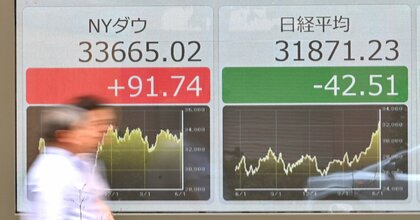Originally published in Japanese on July. 10, 2024
Warming, but not euphoric
One way to know why? Sentiment. Stocks move most on the gap between expectations and subsequent reality. So gauging sentiment is crucial. There are hard and easy ways. Today, both reveal lingering skepticism, setting up positive surprise—and a more bullish market ahead.
Investing legend Sir John Templeton famously said, “Bull markets are born on pessimism, grow on skepticism, mature on optimism, and die on euphoria.” He perfectly encapsulated sentiment’s cyclical evolution.
For example, after 2020’s rocketship recovery from lockdown lows—born in despair—sentiment warmed unusually fast in 2021. Frothy pockets emerged in crypto and special purpose acquisition company (SPAC) initial public offerings—like Softbank-backed Grab’s hotly hyped NASDAQ debut —priming negative surprise.
Then came Ukraine, inflation, interest rate hikes, supply chain chaos...and stocks slide. Yet by mid-2022, long-running fears drove irrational pessimism, fostering positive surprise and this 2022-24 global bull market.
Globally, sentiment has since warmed... some. Bank of America’s May fund manager survey revealed the most bullishness since November 2021, tempered by falling global economic expectations. Japanese consumer confidence is still tepid, but it has risen from the mid-2022 lows. The Cabinet Office’s Business Survey Index shows firms’ economic outlooks sharply higher than late-2022 lows. Global surveys broadly show brighter outlooks, too. But skepticism remains—especially in Europe.
Yet bears bizarrely believe we somehow fast-forwarded to euphoria! They cite stale fears like two wars and Japan’s economic contraction as “proof” investors are exuberant, setting up stocks to fall—while claiming just a few stocks underpin this bull market. Wrong! About 36% of global stocks lead the world’s 22.1% year-to-date return in yen.
The hard way
So how to assess sentiment? Start with one tough method my firm uses: plotting professional sentiment “bell curves.” Professionals’ forecasts reflect and influence sentiment. In aggregate, they reveal which outcomes are widely expected and discussed... and which are not. This does not foretell what will happen—stocks pre-price common forecasts and then do something different. But it shows what people think will happen and, hence, is pre-priced—a sentiment signal.
Consider recent forecasts for the widely watched S&P 500 versus reality: At 2018’s start, the median forecast envisioned 5.3% USD gains, excluding dividends. Reality? Stocks fell 6.2%! In 2019, the median forecast was 15.8%—about half the 28.9% stocks delivered that year. 2023’s projection? A middling 9.4%—way below stocks’ actual 24.2% surge.
Entering 2024, the median forecast was 1.8%. Paltry! Upward revisions boosted that to 4.8% by mid-April—yet still nowhere near U.S. stocks’ long-term 10.2% annualized average return without dividends (which includes bear markets) or the S&P 500’s 10.6% year-to-date price-only return! Hardly “optimistic.”
Consider, too: Of 54 professional S&P 500 forecasts heading into this year, 40 clustered between minus 2.9% and positive 9%. Nine envisioned declines worse than minus 3%. None foresaw returns exceeding 17.1%. Now? Despite some firms’ sunnier outlooks, still none expect 17% or greater. Euphoria? No!
A simpler method
Here is an easier sentiment tracking tool: Watch how economic data compare to prior estimates. You can find consensus forecasts for gross domestic product, inflation, and much more on many financial news websites. Are most results undershooting estimates? If so, the sentiment is too optimistic! Are most beating prior estimates? Too dour! Low expectations mean even so-so results do not doom stocks.
For most of 2024, key global data have outpaced estimates. Yes, first-quarter U.S. and Japanese GDP both missed estimates, yet close to 80% of S&P 500 firms reported positive first-quarter earnings surprises. European GDP, inflation numbers, and purchasing managers’ indexes broadly beat dour forecasts.
Consider IPOs, too. Most companies do IPOs when prices benefit sellers (early investors)—not buyers. Amid the euphoria, high spirits stoke demand. Early successes fan optimism, leading to later low-quality listings flooding markets. Sunny sentiment detaches from weakening fundamentals.
Global IPO issuance is up versus 2023’s virtual desert. Trial Holdings’ big debut and the Tokyo Stock Exchange’s startup initiative stoke some spirits in Japan, but global activity remains muted overall. Many firms are using proceeds to retire costlier debt. And most are established, quality firms—unlike 2021’s speculative SPACs. Nothing euphoric there.
Whether using easy or hard methods, tracking sentiment is key. Today, it signals more gains ahead.
Ken Fisher is the Founder and Executive Chairman of Fisher Investments, a $200 billion global investment management firm spanning Asia, North America, Europe, Australasia, and the Middle East. He is the author of 11 books, including four New York Times Bestsellers, and writes customized columns in leading publications in 17 countries. He lives in Dallas, Texas. The views expressed here are his own.











